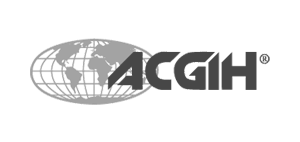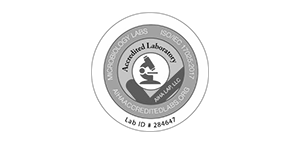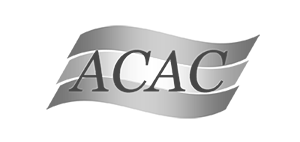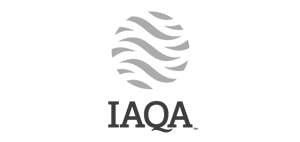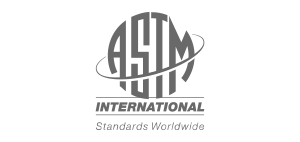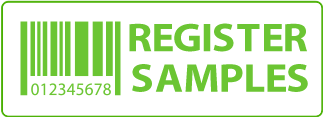Mold Detection: 7 Proven Methods to Find Hidden Mold in Your Home
Discovering mold in your home can feel overwhelming, especially when you suspect it’s hiding in places you can’t see. With over 100,000 species of mold and spores that can remain airborne for hours, effective mold detection requires the right approach for your specific situation.
Whether you’re dealing with a musty smell, visible discoloration, or health symptoms that suggest mold exposure, this comprehensive guide covers seven proven methods to detect mold accurately and affordably.
Why Professional Mold Detection Matters
Before diving into detection methods, understand that mold detection isn’t just about finding visible growth. Mold spores are microscopic, and by the time you see mold colonies, the problem has often spread significantly. Professional-grade detection helps you:
- Identify hidden mold behind walls, under flooring, and in HVAC systems
- Measure spore concentrations in your indoor air
- Determine mold species to assess health risks
- Create targeted remediation plans based on actual contamination levels
The key is choosing detection methods that match your situation and budget while providing laboratory-accurate results.
Method 1: Visual Inspection and Sensory Detection
Best for: Initial assessment and obvious mold problems
Cost: Free
Accuracy: Limited to visible growth only
Start with a systematic visual inspection of your home. Look for:
- Discoloration on walls, ceilings, or floors (black, green, white, or orange spots)
- Water damage signs like staining, warping, or bubbling paint
- Musty odors that persist even after cleaning
- Condensation patterns around windows, pipes, or HVAC units
Pro tip: Use your smartphone’s flashlight to inspect dark corners, under sinks, and behind appliances where moisture commonly accumulates.
While visual inspection costs nothing, it only reveals surface-level problems. Hidden mold behind walls or airborne spores require more sophisticated detection methods.
Method 2: Electronic Mold Detectors and Sensors
Best for: Real-time monitoring and electronic confirmation
Cost: $50-$300 for consumer devices
Accuracy: Good for moisture detection, limited for mold identification
Electronic mold detectors use various technologies to identify conditions that promote mold growth:
- Moisture meters detect elevated humidity in building materials
- Volatile organic compound (VOC) sensors identify chemical signatures of mold metabolism
- Multi-gas detectors monitor air quality changes that indicate microbial growth
Popular device types:
- Pin-type moisture meters for testing drywall and wood
- Pinless infrared sensors for non-invasive scanning
- Air quality monitors with mold-specific VOC detection
Limitations: Electronic devices excel at finding moisture problems but can’t definitively identify mold species or provide spore counts needed for health assessments.
Method 3: DIY Air Sampling Kits
Best for: Comprehensive home testing with laboratory analysis
Cost: $150-$250 including lab fees
Accuracy: Laboratory-grade results with species identification
Air sampling represents the gold standard for comprehensive mold detection. This method captures airborne spores that visual inspection and electronic devices miss entirely.
My Mold Detective’s air sampling system provides laboratory-accurate results without the $300-$800 cost of professional testing. The process involves:
- Outdoor control sampling to establish baseline spore levels
- Indoor air sampling in suspected areas using calibrated pumps
- Laboratory analysis identifying mold species and concentration levels
- Professional reporting with health risk assessments and remediation guidance
Why air sampling works: Mold spores remain airborne for hours after disturbance. Even if you can’t see active growth, air sampling reveals the true extent of contamination throughout your home.
Learn more about our complete testing process to understand how air sampling provides the most accurate detection results.
Method 4: Surface Sampling with Tape Lifts
Best for: Confirming visible growth and testing suspicious stains
Cost: $30-$50 per sample
Accuracy: Excellent for identifying surface mold species
Surface sampling uses adhesive tape or swab collection to capture mold directly from suspected areas. This method works well for:
- Confirming whether stains are mold or just dirt/discoloration
- Identifying specific mold species on surfaces
- Testing areas where you suspect growth but can’t see clear colonies
The tape lift method involves pressing clear adhesive tape against the suspicious surface, then sealing it for laboratory analysis. Labs can identify mold species and provide concentration estimates from surface samples.
Best practices:
- Sample multiple areas if you see widespread staining
- Include a control sample from a clean area for comparison
- Handle samples carefully to avoid contamination
Method 5: Professional Mold Inspection
Best for: Comprehensive assessment and legal documentation
Cost: $300-$800 for full home inspection
Accuracy: Highest accuracy with certified inspector expertise
Professional mold inspectors combine multiple detection methods with specialized training to provide the most thorough assessment. Services typically include:
- Moisture mapping using professional-grade meters
- Thermal imaging to identify hidden water sources
- Air and surface sampling with chain-of-custody documentation
- Written reports suitable for insurance claims or legal proceedings
Choose professional inspection when:
- You’re buying or selling a home
- Insurance claims require certified documentation
- Health symptoms suggest significant contamination
- Previous DIY testing revealed concerning results
Method 6: Infrared Thermal Imaging
Best for: Finding hidden moisture sources that lead to mold growth
Cost: $200-$500 for professional thermal survey
Accuracy: Excellent for moisture detection, indirect mold indication
Thermal imaging cameras detect temperature variations that indicate moisture problems behind walls and under floors. While thermal imaging doesn’t directly detect mold, it reveals the moisture conditions where mold thrives.
Applications:
- Roof leaks showing up as cool spots on ceilings
- Plumbing leaks behind walls appearing as temperature anomalies
- HVAC condensation creating moisture patterns in wall cavities
- Foundation issues allowing moisture intrusion
Professional inspectors often combine thermal imaging with moisture meters and air sampling for comprehensive detection.
Method 7: Laboratory-Grade HVAC System Testing
Best for: Detecting mold in heating and cooling systems
Cost: $150-$300 for ductwork sampling
Accuracy: High accuracy for system contamination
Your HVAC system can harbor significant mold growth while distributing spores throughout your home. Specialized testing methods include:
- Supply air sampling at register outlets
- Return air sampling before filtration
- Ductwork inspection using camera systems
- Coil and drain pan sampling for microbial growth
Consider our rental air sampling system for testing multiple locations including HVAC components throughout your home.
Choosing the Right Detection Method for Your Situation
Start with visual inspection if you suspect obvious mold problems or have never checked your home systematically.
Use electronic detectors for ongoing monitoring or when you suspect moisture problems but don’t see visible mold.
Choose air sampling when you need definitive answers about indoor air quality, health symptoms suggest mold exposure, or you want comprehensive testing before major remediation.
Add surface sampling when you see suspicious stains or want to identify specific mold species on materials.
Invest in professional inspection for home purchases, insurance claims, or when DIY results indicate serious contamination.
Understanding Your Results and Next Steps
Regardless of which detection method you choose, understanding your results determines your next actions:
- Low spore counts similar to outdoor levels suggest minimal concern
- Elevated indoor levels indicate active mold growth requiring investigation
- Specific species identification helps assess health risks and remediation approaches
Review our sample lab report to understand how professional mold detection results appear and what different findings mean for your home’s safety.
Take Action: Start with Professional-Grade Air Sampling
Don’t let mold detection uncertainty compromise your family’s health. Our comprehensive mold test kit provides laboratory-accurate results at a fraction of professional inspection costs.
With proper detection methods, you can identify mold problems early, target remediation efforts effectively, and maintain a healthy indoor environment. The key is choosing detection methods that provide definitive answers rather than leaving you guessing about your home’s air quality.
Ready to get started? Browse our complete testing solutions or contact our team for guidance on the best detection approach for your specific situation.
